Yes No Radio Button form control
A form control that lets a form user select Yes or No from a radio button.

Configure the Yes No Radio Button form control
To configure the Yes No Radio Button  control, do the procedure in this topic.
control, do the procedure in this topic.
Video: Common Configuration Settings in eForm Controls
Good to Know
- The data type for this form control is Boolean.
How to Start
- Open eForm Builder.
For information about how to open this screen, refer to eForm Builder screen.
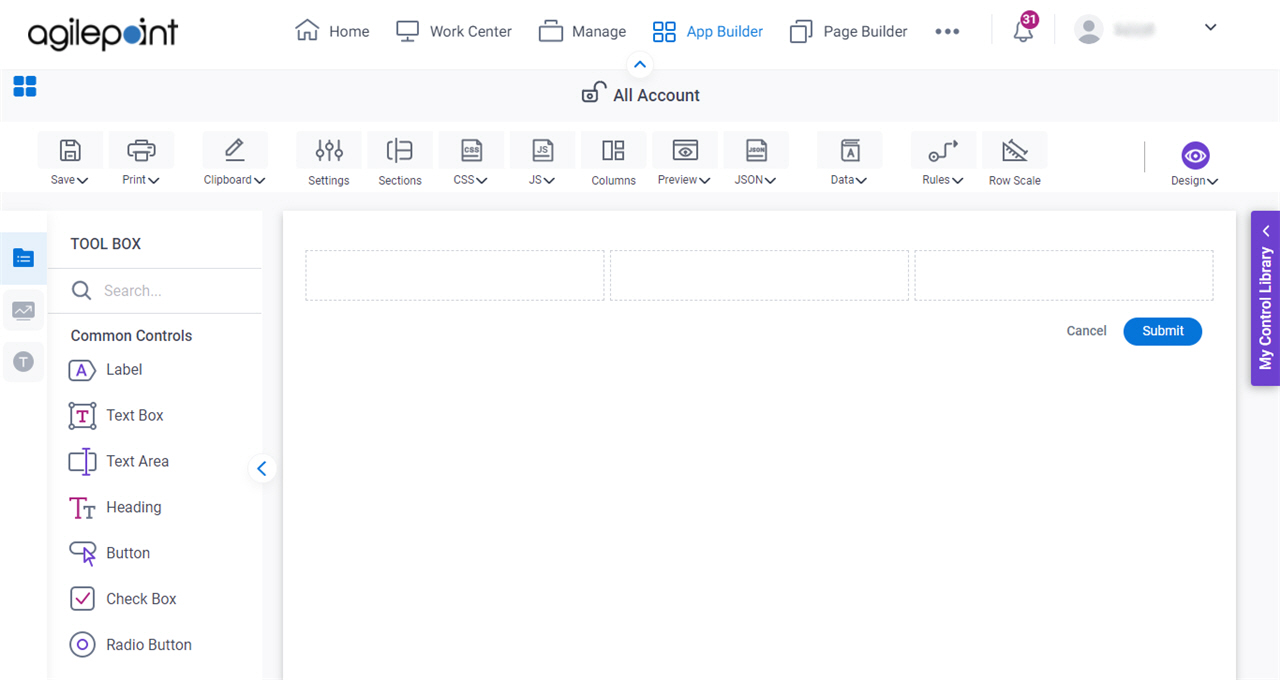
- On the eForm Builder screen, in the Tool Box, open the Commmon Controls tab.

- On the
Common Controls tab, drag a Yes No Radio Button
 form control onto your eForm.
form control onto your eForm.

General tab - Yes No Radio Button
Specifies the basic configuration for the Yes No Radio Button form control.

Fields
| Field Name | Definition |
|---|---|
Language |
|
Label |
|
Internal Name |
|
Default Value |
|
Help Text |
|
Help Text Display |
|
Configure tab - Yes No Radio Button
Configures the settings that are specific to the Yes No Radio Button form control.
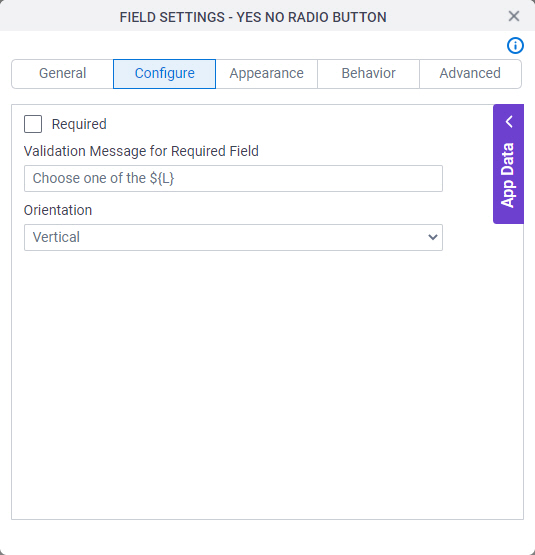
Fields
| Field Name | Definition |
|---|---|
Required |
|
Mandatory Field Validation Message |
|
Orientation |
|
Appearance tab - Yes No Radio Button
Specifies the look and feel for the Yes No Radio Button form control.
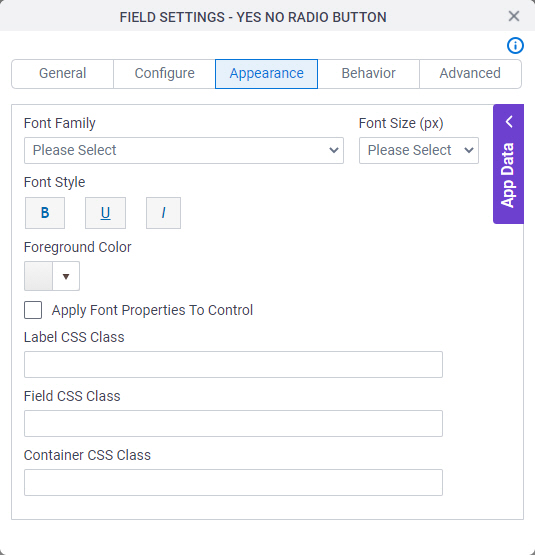
Fields
| Field Name | Definition |
|---|---|
Font Family |
|
Font Size (px) |
|
Font Style |
|
Foreground Color |
|
Apply Font Properties To Control |
|
Label CSS Class |
|
Field CSS Class |
|
Container CSS Class |
|
Behavior tab - Yes No Radio Button
Specifies how the Yes No Radio Button control shows on your form.
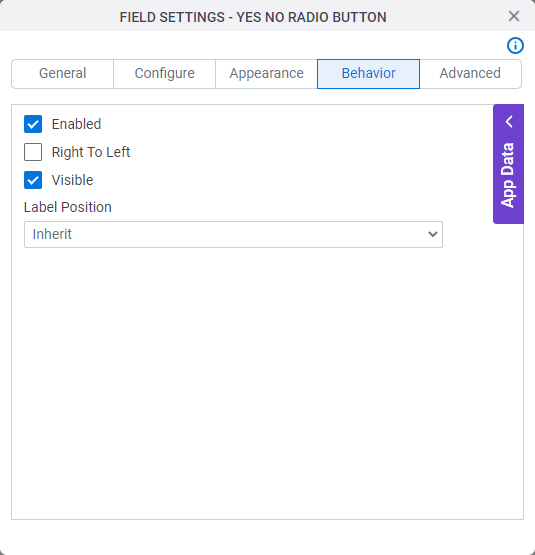
Fields
| Field Name | Definition |
|---|---|
Enabled |
|
Read-Only |
|
Right To Left |
|
Visible |
|
Advanced tab - Yes No Radio Button
Specifies the advanced settings for the Yes No Radio Button form control.
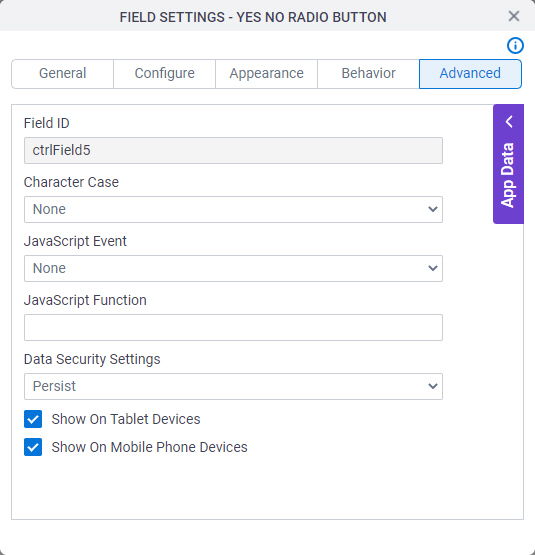
Fields
| Field Name | Definition |
|---|---|
Field ID |
|
Character Case |
|
JavaScript Event |
|
JavaScript Function |
|
Data Security Settings |
|
Show On Tablet Devices |
|
Show On Mobile Phone Devices |
|



